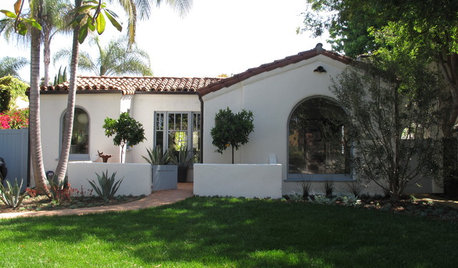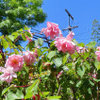Problems with Own-roots on alkaline clay ... info. for Ingrid.
strawchicago z5
11 years ago
Related Stories

GARDENING GUIDESGardening Solutions for Heavy Clay Soils
What’s a gardener to do with soil that’s easily compacted and has poor drainage? Find out here
Full Story
ARCHITECTURERoots of Style: Many Cultures Make Their Marks on Mediterranean Design
If you live in California, Florida or certain other parts of the U.S., your architecture may show distinct cultural influences
Full Story
GARDENING GUIDESHow to Stop Worrying and Start Loving Clay Soil
Clay has many more benefits than you might imagine
Full Story
EDIBLE GARDENSHow to Grow Your Own Sweet Summer Crops
This guide will help any gardener get started on growing the freshest warm-season veggies and berries for summer
Full Story
FARM YOUR YARD6 Things to Know Before You Start Growing Your Own Food
It takes time and practice, but growing edibles in the suburbs or city is possible with smart prep and patience
Full Story
GARDENING GUIDESGrow Your Own Privacy: How to Screen With Plants and Trees
Use living walls to lower your home and garden's exposure while boosting natural beauty in your landscape
Full Story
FALL GARDENINGBe Your Own Wildflower Nursery
Gather seeds from your garden in fall, and you'll have a selection of plants for next year — without spending a dime
Full Story
EVENTSOn Show: The Ingenuity of Ancient Architecture
A German exhibit celebrates the diversity of traditional homes built with materials at hand
Full Story
SPRING GARDENINGSummer Crops: How to Grow Strawberries
Pluck your own sweet strawberries right from the garden vine for smoothies, salads or eating then and there
Full Story
EDIBLE GARDENS12 Essential Herbs for Your Edible Garden
Make home cooking and drinks even better with herbs plucked from your own backyard or windowsill pot
Full Story








lbuzzell
strawchicago z5Original Author
Related Professionals
Danbury Landscape Architects & Landscape Designers · Elwood Landscape Architects & Landscape Designers · Glendora Landscape Architects & Landscape Designers · Forest City Landscape Architects & Landscape Designers · Arlington Landscape Contractors · Stamford Landscape Contractors · Pomona Landscape Contractors · Royal Oak Landscape Contractors · Forest Hill Landscape Contractors · North Aurora Landscape Contractors · Eatontown Swimming Pool Builders · League City Swimming Pool Builders · Rowlett Swimming Pool Builders · Wheeling Siding & Exteriors · Yakima Siding & Exteriorssherryocala
ingrid_vc so. CA zone 9
strawchicago z5Original Author
sherryocala
kittymoonbeam
strawchicago z5Original Author
bart_2010
dublinbay z6 (KS)
floridarosez9 Morgan
ingrid_vc so. CA zone 9
sherryocala
strawchicago z5Original Author
strawchicago z5Original Author
Kippy
floridarosez9 Morgan